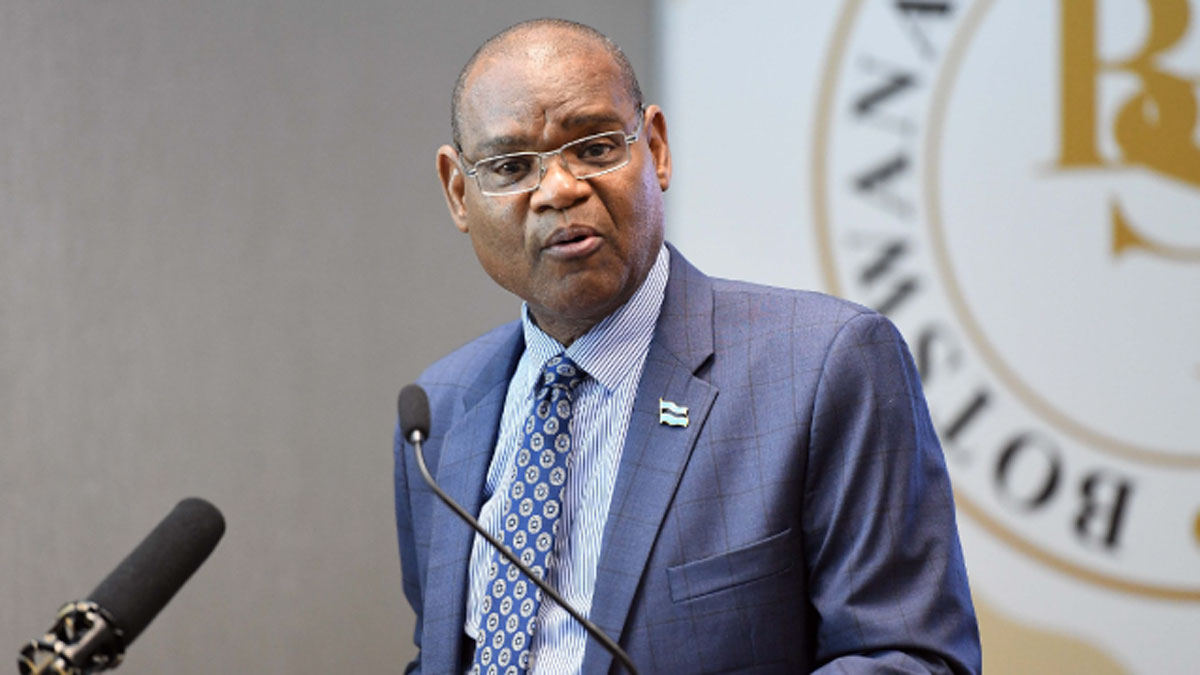Botswana has recorded the highest inflation in the last eight eight years. According to Bank of Botswana (BoB) Governor Moses Pelaelo, inflation has breached the upper bounds of the desired levels as set by the Central Bank.
Presenting BoBs’ annual report, 2021 in Maun this week, Pelaelo noted that the inflation was above the Bank’s 3 to 6 percent medium term objective range in 2021 (May-December) averaging 6.7 percent in 2021.
Pelaelo said monetary policy was conducted in the context of projected high inflation in the near term associated with increase in taxes/levies and administered prices and elevated foreign inflation as well as modest recovery in domestic demand resulting from easing of COVID-19 related containment measures.
“Consequently for the first time in eight years inflation in Botswana breached the upper bound of the desired inflation objective,” Pelaelo said.

According to the annual report, domestic inflation increased significantly from an average of 1.9 percent in 2020 to an average of 6.7 percent in 2021, making the inflation rate higher than the 10 year (2012-2021) average of 4.2 percent.
According to the report, inflation rose above the Bank’s 3-6 percent objective range in May 2021, for the first time since June 2013.
The increase was mainly due to the hike in levies, taxes and administered prices which altogether added 5.9 percentage points to inflation during the year.
The inflation was felt since December 2020 when it rose from 2.2 percent to 8.7 percent by December 2021.
Meanwhile food price inflation increased from, 3.6 percent in December 2020 to 7.2 percent in December 2021, in the context of significant price increases for oils, fish and meat.
Regarding core inflation measures the 16 percent core timed according to BoB mean inflation increased from 2.1 percent in December 2021 while inflation excluding administered prices increased from 3.3 percent to 7.1 in the same period.
Inflation for domestic tradeables decreased marginally from 5.4 percent in December 2020 to 5.3 percent in December 2021 due in part to the general decrease in the rate of growth of private school fees and travel fares consistent with the movement restrictions to contain the spread of covid-19 virus, conversely imported tradeables inflation rose significantly from -1.3 percent to 14.2 percent in the same period because of the increase in fuel prices in 2021.
As a result all tradeable inflation rose from 0.5 percent in December 2020 to 11.7 percent in December 2021.
Meanwhile non-tradeables inflation reportedly increased from 4.5 percent to 4.7 percent in the same period, reflecting in part higher Botswana Housing Corporation and private low-cost house rentals.
However headline inflation is forecast to remain above the bank’s 3-6 percent objective range in the short term and revert to within the objective range in the third quarter of 2022, “This outlook is subjective to significant upside risks including the continuing adverse impacts of the COVID-19 pandemic.”
These risks the central bank maintains, are moderated by the possibility of weak domestic and global economic activity and restrained commodity prices.
On global accounts it is expected that global inflationary pressures will remain elevated in 2022, against the background of prolonged supply chain disruptions and high energy prices and other input costs.
The anticipated inflationary pressures according to the report, stems from improved global demand conditions as most economies progressively deploy effective COVID-19 vaccines and reopen.
“Escalation of geopolitical tensions notable (Russia-Ukraine conflict) and subsequent sanctions imposed by some major countries on Russia also add to the inflation threat and uncertainty, thus inflation for advanced economies is forecast to increase from 3.1 percent in 2021 to 3.9 in 2022 while for emerging market economies it is forecast to increase from 5.7 percent to 5.9 percent in the same period.”
In this environment it is anticipated that monetary policy will likely tighten in most economies to control inflationary pressures resulting from the pandemic induced supply and demand mismatches that could persist for some time.
However, due to the impact of the Russia-Ukraine war, the speed and magnitude of policy tightening is said to likely be moderated.
In the meantime unemployment stood at 26 percent in the fourth quarter of 2021 while real GDP is projected to expand by only 4.3 percent in 2022.
The expansion according to BoB will be driven mainly by the expected continued recovery of mining activities and anticipated global demand among others.






